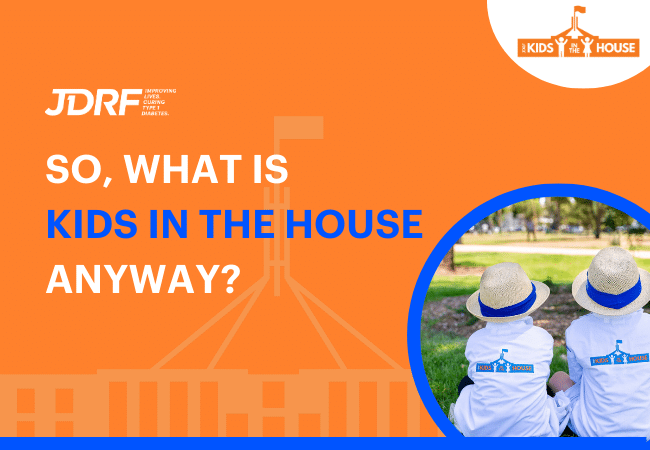Accessing financial assistance for type 1 diabetes in Australia

Most families who have a child diagnosed with type 1 diabetes (T1D) will experience an impact on their finances.
This may be through loss of income: at first, you might have to take a block of leave as you support your child to adjust to their return to school, or you may consider reducing your work hours to manage your new found carer role. You’ll also need to factor in the additional day-to-day costs that T1D incurs, which will impact your budget.
The good news? Financial assistance is available in a variety of forms.
- Financial impacts of T1D
- Help getting T1D supplies
- Other T1D financial support
- Private health insurance for T1D devices
Financial impacts of type 1 diabetes
First, some background on the cost of insulin and other diabetes supplies in Australia.
A 2021 report by JDRF Australia, Economic Cost of Type 1 Diabetes in Australia, found that adults living with type 1 diabetes spend an average of $257.60 a month on supplies to treat their diabetes. This includes insulin pump consumables, blood glucose or urine monitoring strips, and insulin syringes and pen needles if needed. This excludes the cost of continuous glucose monitoring (CGM) and flash glucose monitoring.
Help getting T1D supplies
NDSS
The National Diabetes Services Scheme (NDSS) offers free support and free or subsidised diabetes supplies. This includes the free supply of continuous glucose monitor (CGM) supplies for people with T1D who are under 21 years of age.
NDSS: CGM initiative for ages 21+
People over 21 with type 1 diabetes who use CGMs or flash GMs previously paid between $2600 and $5000 a year for the technology. But after sustained advocacy and campaigning by JDRF and other members of the Diabetes Alliance, the government announced the expansion of the CGM subsidy initiative, giving those over the age of 21 free access to CGM and flash GM technology.
To find out if you’re eligible and to access the subsidy, visit the NDSS website.
Health Care Card
Most families with a child with T1D aged under 16 years are eligible for a Health Care Card (HCC). The HCC can be used to get discounts on prescription items and medical supplies as well as making you eligible for other concessions varying from state to state.
Low Income Health Card
The Low Income Health Card is a concession card that allows people on a low income to get cheaper health care and some discounts. Income tests and residency rules apply.
Insulin Pump Program
The Insulin Pump Program (IPP) provides insulin pumps to children and young adults under 21 years with T1D. Families must meet financial and clinical eligibility requirements to be part of the program.
Check your eligibility for the Insulin Pump Program here.
Other T1D financial support
Check what Centrelink payments you may be eligible for using the government’s payment and service finder. Some of them are listed below.
Carers Allowance
Families who earn a combined adjusted taxable income of less than $250,000 per financial year are eligible for a fortnightly Carers Allowance, which is assessed and administered through Centrelink. If the child is under 16, you will then also receive a Health Care Card.
Carers Adjustment Payment
A one-off payment, the Carers Adjustment Payment is available for parents of children aged under seven years who have been diagnosed with a severe medical condition. Some T1D families have been successful in obtaining the payment. A detailed application is required, and it needs to be submitted within two years of diagnosis.
Essential Medical Equipment Payment
The Essential Medical Equipment Payment is a yearly payment to help with energy costs to run essential medical equipment or heating or cooling for medical needs.
Chronic Disease Management Plan
Speak to your general practitioner (GP) about obtaining a Chronic Disease Management Plan for your child. This may make you eligible for additional Medicare payments for services such as a podiatrist, physiotherapist, dietitian, private diabetes educator, etc.
Closing the Gap
Closing the Gap programs help Aboriginal and Torres Strait Islander people who have a chronic disease or who are are at risk of developing a chronic disease. People can sign up for Closing the Gap programs with their general practitioner (GP) or practice staff at their usual health care provider.
Partial registration refund
In some states, you may be eligible for a refund on some of your car registration payment. Some need to be applied before paying registration, while others can be received as backpay later.
- In NSW, the Carers Registration Refund is available for those who get the Carer Allowance.
- In Tasmania, people with a Health Care Card can get a registration discount of around $50.
- In the ACT, people with a Low Income Health Care Card receive zero registration fees.
- In the Northern Territory, people who receive the Carer Payment are eligible for the NT Concession Scheme, which includes a discount on car registration.
- In Victoria, people with a Health Care Card can get 50% off their registration.
Private health insurance for T1D devices
Some private health insurance policies help cover the cost of an insulin pump. Here’s what you need to know:
- all gold-tier policies cover insulin pumps, but you can also find silver and bronze level policies that cover them
- you can get policies that cover just one person, rather than the whole family (this is true for children as well)
- you only need hospital cover for an insulin pump (but of course you can also choose extras if you wish).
You can search the Australian Government’s private health comparison site to find private health insurance cover for insulin pumps. To do so:
- go to the policy comparison page on privatehealth.gov.au
- at step one, choose ‘hospital’ or ‘combined (both)’, depending if you just want hospital cover (for the insulin pump) or hospital and extras too
- at step two, select ‘insulin pumps’ from the list of hospital services
- continue entering your details, then compare the relevant policies at the end.
You can use a similar service on Finder. However, this doesn’t list all private health companies or policies.
TIP: When looking at private health insurance coverage for insulin pumps, check when the company will replace the pump once it’s out of warranty. The pumps usually have a four-year warranty, and while most companies will allow you to get a new pump after four years, some health funds may make you wait for five years.




